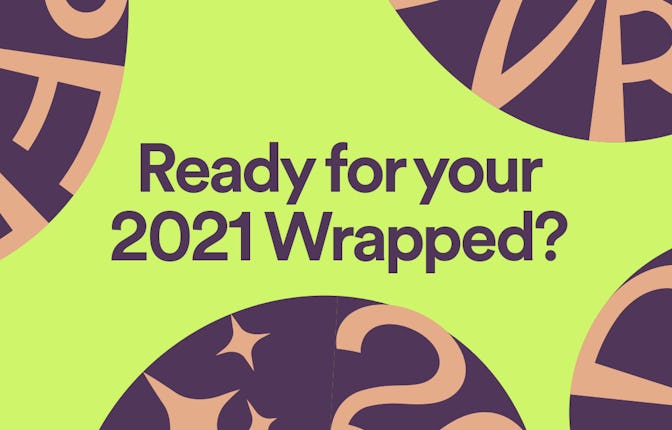Spotify Wrapped is creepy. Let’s be honest.
Spotify Wrapped insists on dominating us, but we’d share its graphics even if it didn’t.

Spotify has been in our lives for over a decade now — and despite feeling a bit alien upon its debut, it’s now sometimes hard to remember ever living without it. The app that cornered the market on music listening, is now both ubiquitous and controversial. For those who may not remember, your elders deserve respect — from walking through record stores with backpacks full of CDs, to buying albums on iTunes once the industry went digital, we went through a lot so you could run through cities with a whole catalog of music on your phone. Back then, an equitable share of that money went to the people who made the music. There were pirating issues for sure, but the digital music industry was made more black and white by that demarcation between good music downloading and bad.
Queue Spotify—the sinister gray area that swooped in with a simple monthly fee for unlimited streams, birthing both a moral and industry dilemma at the same time. Now none of us can live without the app, it would seem, at least not its roughly 200 million subscribers. To remind us that we’ve been properly domesticated to their ways like good little house cats, they now give us our Spotify Wrapped every year. It’s kind of like a BDSM Pornhub video, except the cuck is all of us, and the troop of women in dominatrix get ups is Spotify’s marketing team and a group of savvy interns.
It’s a pretty brilliant PR gimmick — essentially, Spotify takes all of our listening data we willingly give them and then wraps it up like a creepy little present that feeds on one of our worst qualities: our narcissism. Most of us know that we have let ourselves become a product in the app landscape. Our data is bought and sold and we smash that “Agree to Terms” button like it’s a hookup we’re trying to swipe right on, but in Spotify’s case, we pay them to give them our data. And then we all wildly share our Spotify Wrapped graphics like daddy gave us the dolly we’ve been begging for. It’s truly wild how smart of a press trick it is. While Spotify might not be a very social app, they found a way to still engrain themselves in the social media landscape for days on end once a year — and we do the work for them, all because they curated the information to be another way we can share content about ourselves.
This year Spotify upped the ante on its packaging for Spotify Wrapped. Not only does the slideshow tell you your most played songs and artists in its normal over-reaching, creepily personal sort of way; this year it adds cinematic aspects, aligning songs to a movie “where you’re the main character,” with tracks matched to scenes like the “opening credits,” “proclaiming your love in the rain,” or “a stand off with a rival dance crew.” The presentation continues with a reading of your “audio aura,” which has all of the clairvoyance of that theme park fortune teller doll behind glass — it intimates intuition while being completely reliant on an, albeit smart, algorithm.
But while being complete bullshit, it still totally hooks people. New age aesthetics are in, and thus that little computer-generated aura polaroid all over social media today. It’s a digital snack that taps into a cultural trend, while also giving us some kind of meaning behind the relatively chaotic way we listen to music now. With all of the curated playlists and paid advertisements, we’ve lost a lot of our soul connection to the music we listen to because it’s so accessible and shoved down our throats when we open the app — the specialness of the days of slow, tactile interaction with one song or album are gone. So Spotify is finding ways to fabricate it for us now, kind of like when Willy Wonka puts a whole meal into a piece of gum.
Spotify is widely bemoaned by artists rights activists and high profile musicians for paying next to nothing for the music that their entire concept relies on. Spotify pays artists around $0.00437 per stream — a laughably small figure, that should honestly be illegal — while its CEO, Daniel Ek, is worth around $4 billion. Unfortunately, little gets done about the music streaming behemoth’s pay structure, because artists struggle to be discovered by listeners without the exposure that Spotify provides and the ease with which listeners can find them there. And it shows in the way artists interact with Spotify Wrapped as well — with many not-so-humbly sharing their cool-colored respective data spreads that relay how much people listen to them. Spotify Wrapped is a big celebration of how death capitalism and the digital age are ruining the world, and we all happily march in the parade. Personally, I just don’t need to be reminded that I exclusively listened to the early Coldplay catalog in March during a minor depression — so for me, Spotify Wrapped is a big no.